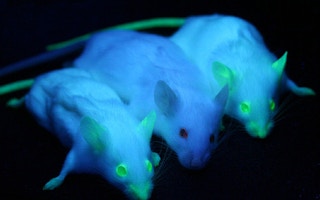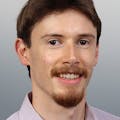Humans have shaped aspects of the living world to suit themselves throughout their history. We’ve domesticated plants and animals for food, security and companionship for tens of thousand of years, ensuring early civilisations could survive, develop, and eventually trade with each other.
Throughout history, our relationship with other species has been tied to meeting human needs. Species have been selectively bred so that their offspring over-express particular genetic traits, such as obedient behaviour in dogs or larger size and power in horses.
Over time humans have become more ambitious about choosing behavioural and physical traits to embed in other life forms. In recent decades, humans have also become increasingly capable of genetically engineering species – manipulating their DNA by splicing or inserting genetic material from other species into their genome.
A museum which opened in Pittsburgh, USA in 2012 has sought to chart the human influence in the biology of other species. The Center for PostNatural History invites visitors to explore how humans have shaped the living world, defining “post-natural history” as:
the study of the origins, habitats, and evolution of organisms that have been intentionally and heritably altered by humans.
The Center’s director and founder, Richard Pell, goes further in explaining the post-natural.
It’s not just giving a dog a weird haircut, it’s breeding a dog that has weird hair. And its offspring will have weird hair forever. It’s sculpting the evolutionary process. […] It’s that moment at which culture intervenes in nature, and the organism has not just a story to tell about evolution or habitat, but has a story to tell about us.
The post-natural planet
The Center claims to be the world’s only museum that is exclusively focused on post-natural lifeforms, exhibiting species often omitted from typical natural history museums. There’s a hairless, obese rat, fish which glow in the dark, and transgenic mosquitoes which have been bred so they can’t carry dengue fever.
“
Our relationship with other species has been tied to meeting human needs.
There’s also a mix of familiar species—different breeds of dogs and chickens—and species often less associated with human interference, such as corn, bananas and chestnut trees. All these species, and many others, have different genetic traits over-expressed to accentuate desirable features. Dogs, for example, have been domesticated and selectively bred out from a common wolf ancestor to more than 350 breeds, according to strict guidelines in keeping with particular cultural desires around behavioural traits and visual qualities.
Often these human whims to breed dogs with flattened faces, aggressive behaviour or short legs have had little or no regard for the species’ long-term welfare.
These standards reflect the values and desires of those who bred them. The Silkie chicken originated in China and has fluffy plumage—bred to satisfy visual desires rather than Western appetites for enormous breasted factory-farmed chickens, which are bred for uniform size to fit in processing machines.
The Center also has a stuffed mount of an “alcoholic” rat, bred to choose alcohol over water when given the choice, as part of a laboratory experiment by researchers in Finland to help find a cure for alcoholism. Then there’s “Freckles”—a stuffed goat bred by the company Nexia to produce spider silk in her milk as a potential replacement for Kevlar in military uniforms.
These three exhibits demonstrate how non-humans have been moulded to reflect human expectations and desires. The cultures which govern human life also increasingly apply to non-humans. It’s also no coincidence that the species discussed here have been bred in pursuit of profit, directly or indirectly. This suggests the pervasive influence of consumer capitalism in human behaviour.
The most profitable organisms—such as cattle—have received the most investment and attention. The Belgian Blue cow, for example, has been bred for enormous, succulent and tasty shoulder and thigh muscles. But these mean Caesarean sections are needed to avoid birth canal blockages.
Profitable crop species are usually treated with pesticides to kill insects, or habitats are destroyed to farm profitable species on. We leave little room for the species we haven’t exploited—humans and livestock account for 96% of mammal biomass.
This has created dangerous imbalances in ecosystems, while many of the species we exploit are being consumed faster than they can reproduce. Humans have inserted themselves into the life cycles of much of the living world, and these changes are heritable—their genetic trajectory is irreversibly set.
The Center for PostNatural History therefore shows us our collective power to shape the living world in our image. This power must be used responsibly.
Dominic Walker is a cultural geographer interested in experimental geographies at Royal Holloway, University of London. This article was originally published on The Conversation.











